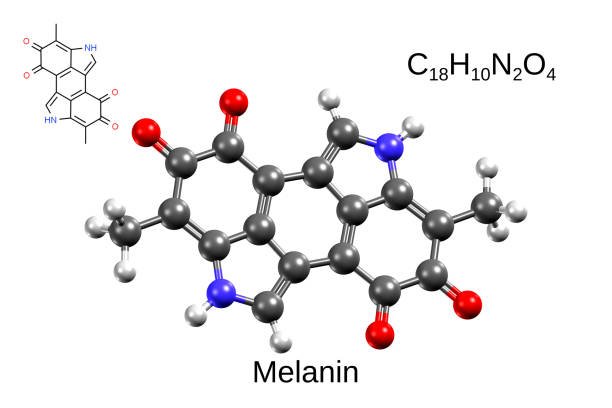
Introduction
Phytochromes are a class of photoreceptors that play an essential role in mediating plant responses to light signals, thereby influencing numerous components of plant increase, development, and stress tolerance. The various phytochromes, phytochrome B (phyB) have emerged as a key regulator of mild-mediated tactics in vegetation, exerting a giant effect on photoprotection and photoinhibition.
Photoprotection refers to the mechanisms that flora hire to guard themselves from the dangerous consequences of extra mild, at the same time as photoinhibition refers to the discount in photosynthetic performance resulting from prolonged exposure to high mild ranges. expertise the effect of phytochrome B PhyB on these processes is critical for elucidating the molecular mechanisms underlying mild signaling and plant responses to environmental challenges.
This article explores the multifaceted role of phytochrome B in modulating plant photoprotection and photoinhibition, shedding light on its implications for plant body structure, strain tolerance, and agricultural biotechnology.
Role of Phytochrome B PhyB in Light Signaling
Phytochrome B is an important component of the plant’s mild signaling pathway, serving as a molecular switch that interprets mild indicators into physiological responses. In its biologically inactive shape (Pr), phytochrome B is predominantly gifted within the darkish, at the same time as exposure to red/some distance-purple light triggers its conversion to the active shape (Pfr). This conformational change initiates downstream signaling activities, leading to the regulation of gene expression, developmental approaches, and adaptive responses in plant life.
Phytochrome B influences diverse factors of plant body structure, inclusive of seed germination, seedling improvement, coloration avoidance, flowering, and stress responses, with the aid of integrating mild cues and modulating the expression of target genes. As such, phytochrome B acts as a principal regulator of light-mediated plant responses, exerting a profound effect on photoprotection and photoinhibition mechanisms.
Impact of Phytochrome B on Photoprotection
Photoprotection mechanisms are essential for vegetation to mitigate the damaging results of excess mild, which may result in the manufacturing of reactive oxygen species (ROS) and photodamage to the photosynthetic apparatus. Phytochrome B has been implicated in modulating photoprotection mechanisms by regulating the expression of genes involved in antioxidant protection, ROS scavenging, and photoprotective strategies.
Research has tested that phytochrome B affects the expression of key photoprotective genes, consisting of the ones encoding for antioxidant enzymes (e.g., superoxide dismutase, catalase) and photoprotective pigments (e.g., carotenoids), thereby improving the plant’s capacity to deal with high mild stress.
In addition, phytochrome B has been shown to modify the expression of warmth shock proteins and different stress-responsive genes, which play an important role in defending the photosynthetic machinery from harm underneath excessive light situations. By modulating these photoprotective mechanisms, phytochrome B contributes to the plant’s resilience to excessive mild pressure, thereby safeguarding photosynthetic performance and ordinary plant performance.
Effect of Phytochrome B on Photoinhibition
Photoinhibition takes place while extended exposure to excessive light tiers leads to the reduction of photosynthetic performance, commonly due to the damage and inactivation of photosystem II (PSII). Phytochrome B has been implicated in modulating the susceptibility of plant life to photoinhibition using influencing the expression of genes worried in PSII repair, photodamage restoration, and photoinhibition restoration tactics.
Research has discovered that PhyB regulates the expression of genes encoding for PSII middle proteins, D1 protein turnover factors, and different components of the PSII repair machinery, thereby selling the efficient restoration of photodamaged PSII complexes. Moreover, PhyB modulates the expression of genes concerned in non-photochemical quenching (NPQ), a photoprotective mechanism that dissipates excess mild electricity as heat, thereby preventing the accumulation of ROS and photodamage.
With the aid of regulating those photoinhibition-associated approaches, PhyB enhances the plant’s ability to get over high mild strain and hold photosynthetic performance, thereby mitigating the adverse results of photoinhibition on plant productiveness.
Molecular Mechanisms of Phytochrome B-Mediated Photoprotection and Photoinhibition
The influence of PhyB on plant photoprotection and photoinhibition is orchestrated through intricate molecular mechanisms that intersect with numerous physiological and biochemical methods. Phytochrome B modulates the expression of genes involved in antioxidant defense, ROS scavenging, and photoprotective pigment biosynthesis, thereby enhancing the plant’s potential to deal with high mild stress.
In addition, phytochrome B regulates the expression of genes concerned with PSII repair, photodamage restoration, and NPQ, all of which make contributions to the plant’s resilience to photoinhibition. The signaling pathways ruled by phytochrome B intersect with the ones of other photoreceptors, hormones, and pressure-responsive factors, forming a complex regulatory community that coordinates photoprotection and photoinhibition mechanisms in plants.
Furthermore, PhyB affects the redox popularity of the cell, signaling cascades, and transcriptional reprogramming, all of which contribute to the plant’s adaptive responses to high mild stress. Using integrating those molecular mechanisms, PhyB performs a pivotal function in shaping the plant’s photoprotection and photoinhibition responses, in the long run influencing its resilience to environmentally demanding situations and overall productivity.
Phytochrome B and Environmental Adaptation
The influence of PhyB on photoprotection and photoinhibition is carefully intertwined with the plant’s capacity to adapt to converting environmental conditions. vegetation frequently comes upon fluctuations in light depth, duration, and best, which could impact their photosynthetic performance and standard overall performance. Phytochrome B enables plant life to feel and respond to those light cues, thereby modulating their photoprotection and photoinhibition mechanisms to optimize photosynthetic efficiency and pressure tolerance.
Furthermore, phytochrome B influences the plant’s capacity to acclimate to various light environments, which includes shade situations, with the aid of regulating coloration avoidance responses and developmental plasticity. Through modulating these adaptive responses, PhyB enhances the plant’s resilience to environmentally demanding situations, thereby contributing to its survival and reproductive achievement in numerous ecological niches.
Engineering Phytochrome B for greater Photoprotection and Photoinhibition Tolerance
The rising expertise of phytochrome B’s influence on plant photoprotection and photoinhibition holds promise for agricultural biotechnology and crop development. Harnessing this knowledge gives possibilities to engineer crop sorts with improved photoprotection and photoinhibition tolerance, thereby enhancing their productiveness and resilience to high mild strain. By manipulating the expression and hobby of PhyB and its interacting companions, it could be feasible to optimize photoprotection and photoinhibition mechanisms in crops, thereby enhancing their capacity to address fluctuating light conditions.
Moreover, leveraging PhyB as a molecular goal for biotechnological interventions opens up exciting opportunities for developing crop types with advanced photosynthetic efficiency, pressure tolerance, and ordinary productiveness. The potential of phytochrome B engineering in revolutionizing agricultural biotechnology and sustainable crop production remains a compelling area of exploration and alertness in the Asian Scientific region.
Implications for Sustainable Agriculture and Meals Safety
The consequences of phytochrome B-mediated regulation of plant photoprotection and photoinhibition contribute to the area of sustainable agriculture and global food safety. As the world population continues to develop, the demand for food manufacturing is escalating, necessitating modern techniques to enhance crop productivity and resilience to environmental stresses.
Expertise in the function of PhyB in shaping plant responses to excessive light pressure presents treasured insights for developing sustainable agricultural practices and crop improvement strategies. Via leveraging the capability of phytochrome B, it could be feasible to expand crop varieties that show off superior photoprotection and photoinhibition tolerance, thereby ensuring their productivity and resilience under fluctuating light conditions.
Moreover, harnessing the adaptive responses governed with the aid of phytochrome B holds promise for growing crop sorts that can thrive in diverse environmental settings, contributing to worldwide food safety and sustainable agriculture.
Conclusion
Phytochrome B, a relevant player in mild signaling and plant improvement, exerts a profound impact on plant photoprotection and photoinhibition. Its multifaceted position in modulating photoprotection mechanisms, photoinhibition recovery procedures, and adaptive responses underscore its importance in shaping plant resilience to excessive light pressure. Unraveling the molecular mechanisms and signaling pathways ruled using phytochrome B offers valuable insights into its capability for enhancing crop productivity and resilience to environmental challenges.
Leveraging this understanding holds promise for growing innovative techniques to improve agricultural productivity, ensure food security, and cope with the challenges posed by converting weather and a growing worldwide population. As research in this area continues to increase, the capacity of phytochrome B in revolutionizing agricultural biotechnology and sustainable crop production remains a compelling place of exploration and alertness.
Read more about mouth larva infestation in humans.







Thank you for your sharing. I am worried that I lack creative ideas. It is your article that makes me full of hope. Thank you. But, I have a question, can you help me? https://www.binance.com/ru-UA/register?ref=OMM3XK51